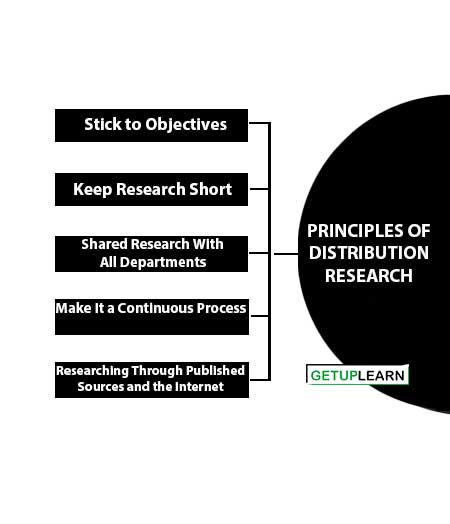Table of Contents
Principles of Distribution Research
Distributor research is by far one of the most difficult research. This is because the responses of a distributor may change. Their responses are never stable. One has to be very careful when dealing with the distributor. Some of the principles of distribution research are:
- Stick to Objectives
- Keep Research Short
- Shared Research With All Departments
- Make It a Continuous Process
- Researching Through Published Sources and the Internet

Stick to Objectives
It is critical for any research to list its objective clearly in order to get the desired outcomes. Make sure that the objectives are clearly laid out before approaching any further.
Keep Research Short
No distributor has the time and energy to answer a 25-page long questionnaire. Thus it is critical for the researcher to note that the research should be short.
As the name suggests, market research is mostly considered a marketing department function. While this does stand true, the findings of the research should also be relevant to all the functional departments of a company.
If this is not the case and the department does not integrate to analyze the finding of the distributors, then there is no use for such an exhaustive exercise.
Make It a Continuous Process
Research is not a one-time activity, it is a continuous process. The decision of a firm will be based on the findings of the research.
Today’s business world is very dynamic and prone to fast changes, and so is the information a firm collects during market research. Thus it becomes important to keep upgrading the customer information time and again in the market research process.
Researching Through Published Sources and the Internet
Researchers can use various sources of data for their market research. One type of data collection called secondary data is very popular in market research among firms.
There are many sources of secondary data like trade associations, national and local press industry magazines, national/international governments, the Internet, informal contacts, professional institutes, etc.
Among these, the two most popular sources of secondary data collection are the Internet and the published sources listed above. In this type of data collection, the information already exists in one form or another.
This form of data collection is comparatively cheaper as the firm does not need to hire people to go into the field and collect information from the distributor. It is also less time-consuming compared to fieldwork which takes a lot of time in execution and compilation.
However, there are some problems with this kind of data collection as well. In India, the Internet can rarely be used as a source of collecting secondary data. Both knowledge and access to this medium are still limited for the researchers.
We still have the traditional method of going door-to-door for primary data collection. Even though the Internet is a very useful source of any type of data, it is quite challenging to reach a particular target segment through the Internet as compared to the primary sources of data collection.
FAQs Section
What are the principles of distribution research?
These are the basic principles of distribution research:
1. Stick to Objectives
2. Keep Research Short
3. Shared Research With All Departments
4. Make It a Continuous Process
5. Researching Through Published Sources and the Internet.
